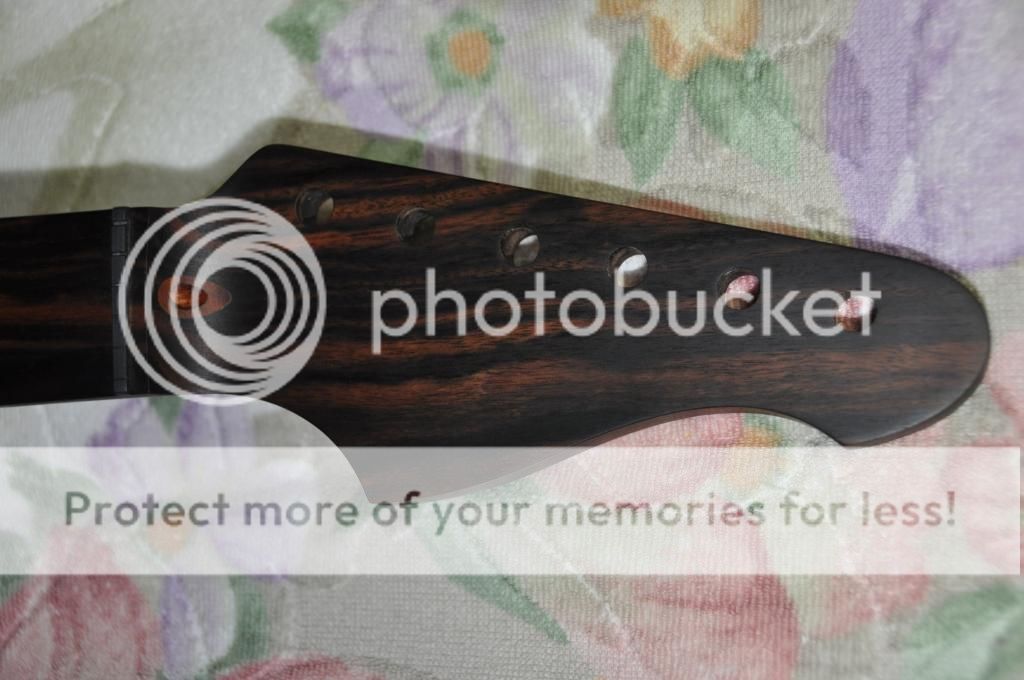DustyCat
Hero Member
- Messages
- 853
It's that time again! :headbang:
Yes sir, but this time I've got my sights set on a replacement neck for my semi-hollow body Fender Thinline Telecaster reissue! Serial # is MX10196199
Now why would I want to replace the neck if the guitar sounds great (noticeable chirping/wood chip/chopping)?
Here's what I need:
* 1 11/16" nut width
* SS6100
* 3 bolt holes (or no holes drilled so my guy can fit it to the pocket and drill them himself).
*22 frets if possible (the neck has only 21 frets right now)
* Full Scallop
* Tuning peg routs for Planet Waves Auto-Trim locking tuners (NICE!)
* 10-16" compound radius
* Less finish! (Jeez oh man does this neck feel like plastic).
Here is what I want :evil4:
*Siimilar sound (chirping/wood chips), but with raw woods if possible (I have heard stories of maple necks doing the pretzel act).
*I also like wide/big grain patterns. I was originally considering Birdseye Maple core/Goncalo Alves fingerboard. But I have seen some really thick striping grain patterns on a GA core.
*Asymmetrical back contour (I am used to Wolfgang, I was considering SRV, your advice welcome)
* Possibly black dots on the side, maybe Warmoth could do a single white block/trapezoid inlay on the 12th fret?
And lastly, I consider my Tele more akin to playing classical music (clean tone, guitar into amp) and the shape of a violin than any of my other guitars so non-traditional headstock suggestions are welcome (possibly a 3 + 3).
I know we have some creative members here, I can't wait to read your suggestions. :toothy10:
Thanks!
-DC
Yes sir, but this time I've got my sights set on a replacement neck for my semi-hollow body Fender Thinline Telecaster reissue! Serial # is MX10196199
Now why would I want to replace the neck if the guitar sounds great (noticeable chirping/wood chip/chopping)?
Here's what I need:
* 1 11/16" nut width
* SS6100
* 3 bolt holes (or no holes drilled so my guy can fit it to the pocket and drill them himself).
*22 frets if possible (the neck has only 21 frets right now)
* Full Scallop
* Tuning peg routs for Planet Waves Auto-Trim locking tuners (NICE!)
* 10-16" compound radius
* Less finish! (Jeez oh man does this neck feel like plastic).
Here is what I want :evil4:
*Siimilar sound (chirping/wood chips), but with raw woods if possible (I have heard stories of maple necks doing the pretzel act).
*I also like wide/big grain patterns. I was originally considering Birdseye Maple core/Goncalo Alves fingerboard. But I have seen some really thick striping grain patterns on a GA core.
*Asymmetrical back contour (I am used to Wolfgang, I was considering SRV, your advice welcome)
* Possibly black dots on the side, maybe Warmoth could do a single white block/trapezoid inlay on the 12th fret?
And lastly, I consider my Tele more akin to playing classical music (clean tone, guitar into amp) and the shape of a violin than any of my other guitars so non-traditional headstock suggestions are welcome (possibly a 3 + 3).
I know we have some creative members here, I can't wait to read your suggestions. :toothy10:
Thanks!
-DC






